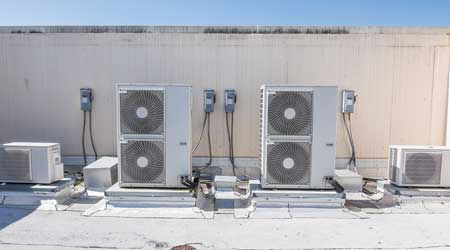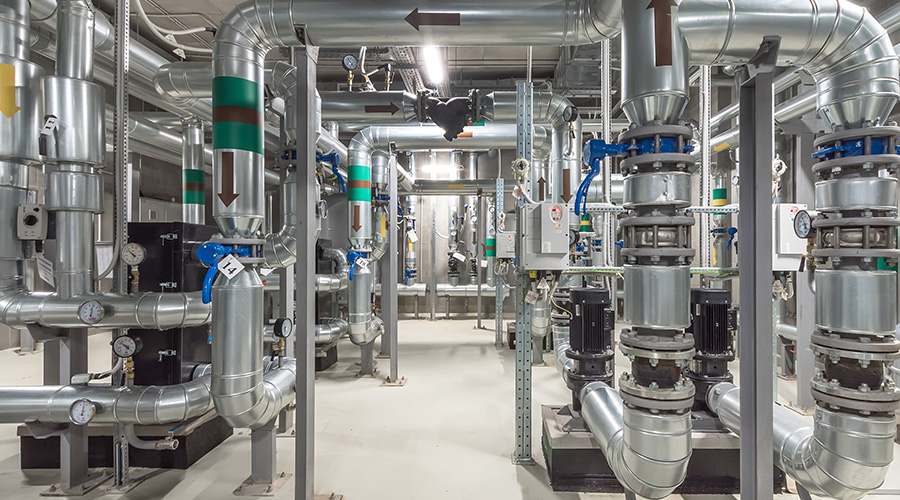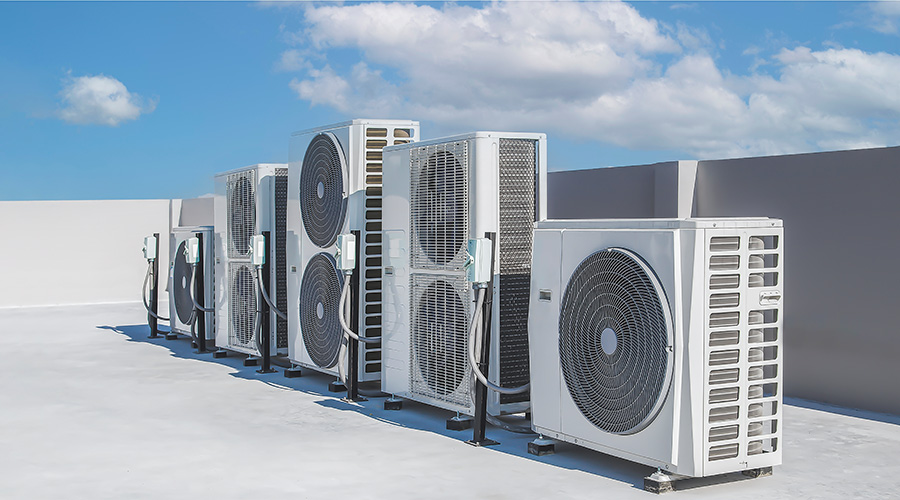What Makes a Rooftop Unit High-Performance?
High-performance rooftop units (RTUs) offer many improvements over standard RTUs. Here's a rundown of the advantages.
High-performance RTU options increase as nominal capacity increases, explains Andrew Lehrer, practice leader of high performance buildings at Environmental Systems Design, Inc. Among the notable improvements high-performance RTUs offer over standard RTUs are the following, according to Lehrer:
- Multiple compressors with digital step control or variable frequency drives, electronic expansion valves, and refrigerant reheat.
- Variable speed condenser fans with enhanced sound performance packages.
- Foam-injected, thermally broken housings with greater flexibility for unit dimension customization.
- Advanced digital controllers.
- Advanced monitoring, including power metering and airflow measuring stations.
- Multiple direct-drive supply fans for redundancy and resilience.
- Evaporative condensing for improved efficiency.
“Facility managers should be concerned with performance, reliability/maintainability and monitoring,” says Lehrer. “High-performance RTUs will reduce long term operations expenses by reducing energy consumption and lowering maintenance costs via enhanced remote monitoring, use of direct-drive fans, and other higher end components (i.e., dampers and compressors) and better performing housings.”
Facility managers interested in evaporatively condensed RTUs should be aware of their maintenance requirements. “Although evaporatively condensed rooftops will improve energy performance, their use of sprayed water to improve heat transfer requires additional maintenance to clean the nozzles, drain pan, and coils and to winterize the unit,” Lehrer says.
Antonio Bouza, technology manager of DOE’s Building Technologies Office, stresses that facility managers should pay attention to the weight limitations of the roof. “High-efficiency RTUs feature better components and fans, larger condensers, and more evaporative coils,” Bouza notes. “Make sure your roof can support the additional weight of these units.”
Side-by-side comparison
A field evaluation between a high-efficiency RTU and an existing six-year-old rooftop unit at two similar Publix stores in Florida provided a performance demonstration. Both units had the same 7.5-ton rated cooling capacity and served each store’s office spaces with similar footprints.
Average daily energy efficiency ratio (EER) was computed for each unit using monitored data during the cooling season. The high-performance RTU had 31 percent higher seasonal EER compared to the reference unit. Had Publix installed another unit like the existing one — with a double compressor, staged cooling, and constant-speed supply fan unit — the company would have consumed about 16,000 kilowatt-hours more annually, leading to additional energy costs of about $1,600. The incremental cost reported by Publix for installing the high-efficiency RTU was about $6,000, which translates into less than 4 years simple payback.
Not every facility manager can replace cooling equipment that is performing well, but many still may benefit by installing advanced controls.
The Advanced Rooftop Unit Campaign also encourages retrofitting existing RTUs with advanced controls. To meet this upgrade, the advanced control retrofit should include at least these three capabilities — multi-speed or variable speed supply fan control, modulating outdoor air damper control with fan speed, and demand-controlled ventilation.
Now the campaign is focusing on intelligent controls and automated fault detection and diagnostics (AFDD), the “check-engine light for RTUs,” according to DOE’s Office of Energy Efficiency and Renewable Energy. AFDD continuously monitors RTU systems performance, identifies faults, attempts to diagnose those faults and clearly communicates the faults or diagnosis to facility staff. Other advanced controls may include variable speed fan control, variable speed compressor control, enhanced economizer control, demand-controlled ventilation, and enhanced humidity control.
Rita Tatum, a contributing editor for Building Operating Management, has more than 30 years of experience covering facility design and technology.
Email comments and questions to edward.sullivan@tradepress.com.
Related Topics:














